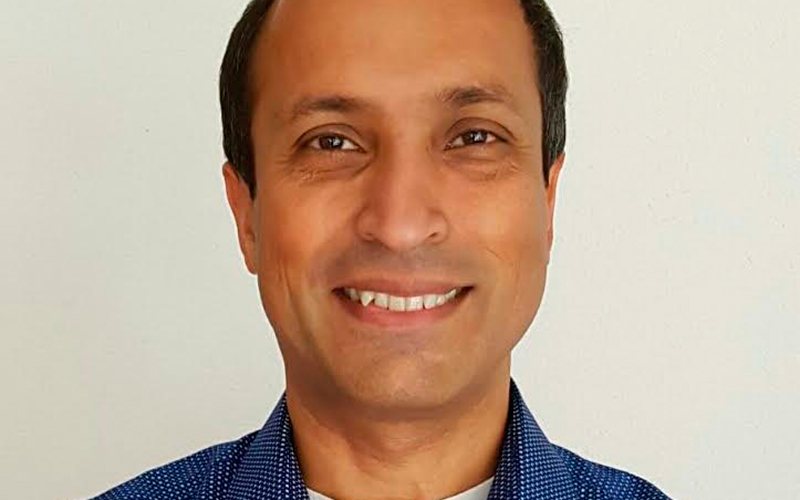Ab Banerjee: A better way to find star performers

Goldman Sachs recently introduced a personality test for prospective new interns. By testing at application stage, the investment bank is hoping to hire new recruits who have similar qualities to its existing ‘star performers’.
The bank is right to think about the personality of an applicant. But in every other way, it has got it wrong. If it recruits only people who think like its existing employees, it runs the risk of producing worse outcomes – not better.
Team effort
Goldman Sachs’ new approach may seem sensible and logical. The company has star performers, and it wants more of them. If it can recruit people with similar personality traits to existing top performers, job done.
But there’s a problem. Star performers don't exist in isolation. They are not people who are naturally ‘better’ than other employees. In fact, it's the opposite. Top performers are the result of an effective and supportive team. They exist because they’ve built an idiosyncratic and highly effective support structure of other employees around them. But that doesn't make the other team members less important or less effective.
The data bears this out. Harvard researchers recently found that 46% of a sample of 1,052 all-star investment analysts could not replicate their performance when they moved to a different investment bank, even after five years. The individual did not change. It was the team that did. "[T]he success of individual star performers is rarely the result of raw talent alone, but also builds on the support structure around them,” writes Mark de Rond in Forbes magazine.
These findings should be a warning to Goldman Sachs. On the one hand, the bank risks hiring only people who feel comfortable in a leadership rather than a supportive role. An effective team needs a combination of both. On the other hand, it is ignoring the fact that many star performers exist only through a combination of timing or luck – which is not something that can be replicated by hiring new individuals with similar personalities.
Thinking differently
But there’s another factor at play here too: effective teams are a result of cognitive diversity rather than of homogeneity. In trying to recruit people similar to their existing employees, Goldman Sachs runs the risk of hiring only people who think and act in the same way as its existing employees.
Success is not about everyone thinking the same way. It’s about everyone thinking differently. Some people are intuitive; others analytical; yet others map problems onto previous ones they have seen. Everyone approaches things in a different way. True effectiveness comes from blending these different approaches together. Cognitively diverse teams are effective because they come up with more new approaches – there’s more discussion, debate, and argument.
For example, a recent study from London Business School and Ashridge Business School found that the more cognitively diverse the team, the more likely and quicker they were to solve a demanding problem. The researchers, Alison Reynolds and David Lewis, write: "Tackling new challenges requires a balance between applying what we know and discovering what we don't know that might be useful... When we have a strong, homogeneous culture, we stifle the natural cognitive diversity in groups." Goldman Sachs is running the risk of doing just that.
This approach is especially risky for a bank, where ‘group-think’ can cause catastrophic results, and lead to conventional ways of doing things going unquestioned and unchallenged.
Fill the gaps
So, what’s the upshot? Companies should focus on hiring people who think differently from their existing employees; people who bring something new to the table; employees with a fresh, interesting take on problems. Yes, personality tests can be helpful, but only if you use them to test existing teams, find the approaches and thinking styles that are missing, and recruit on the basis of filling these gaps.
However, the problem for most firms is not knowing how their existing employees think. They don’t have any data on the thinking patterns and styles of their teams. They likely don’t know whether their existing teams are cognitively diverse or not. You can’t tell just from looking at an individual, or reading through their CV, because cognitive profile doesn't map onto other aspects of a person. "Being from a different culture or of a different generation gives no clue as to how that person might process information," write Reynolds and Lewis.
That is what many companies need to change first. They need to get their hands on this data – acquire a deeper and richer sense of how their existing employees think; how they tackle problems; how they process information and react to challenges.
This process sounds difficult, but it isn’t as hard as you think. Perhaps one of the best ways to start collecting this information is to repurpose real-time feedback tools, so that they also collect feedback on employees’ personalities. For example, as part of your real-time feedback processes, employees could be asked to give judgments about a colleague’s approach, thinking style and personality.
Goldman Sachs should be applauded; it has just put itself ahead of the rest of the field by starting to think about personality. It just needs to make sure that it’s using this data in the right way.
Ab Banerjee is chief executive of ViewsHub
